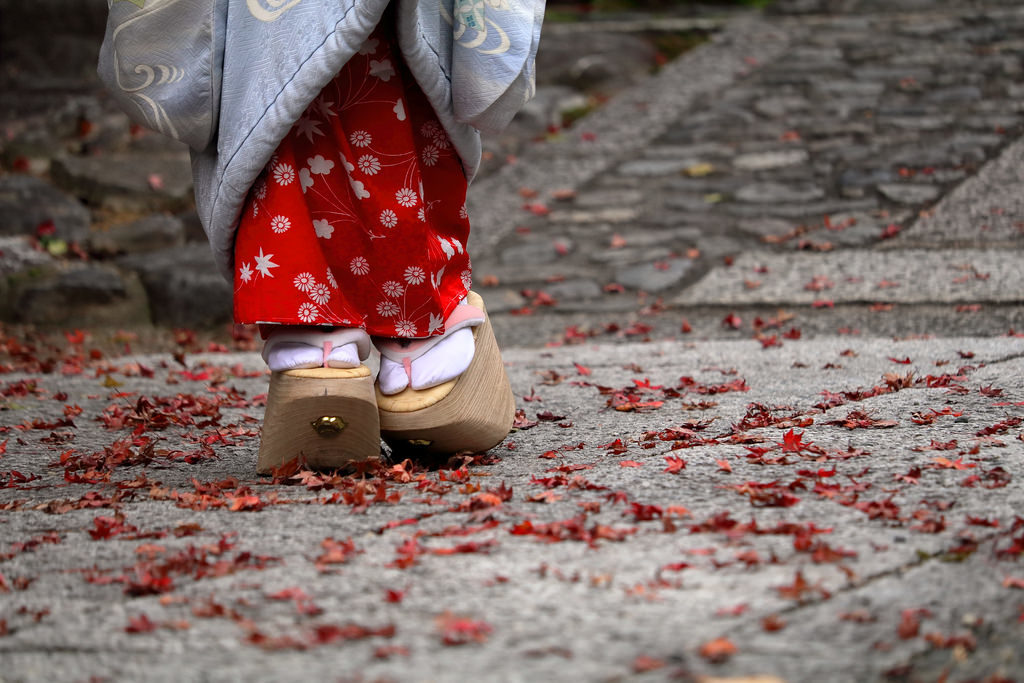
The goal of a maiko’s career is to become a geiko. As for every other special occasion, this particular event is also celebrated with a meaningful ceremony. It’s called erikae (衿替え/襟替え) or, roughly translated, “turning the collar”. The collar worn with a geiko kimono is indeed different than maiko’s one—completely white, in the front and the back, carefully sewn onto a light pink undergarment (襦袢juban) which replaces maiko’s red robes. It’s not only a visual change but a mental transition as well. After the maiko adapts the new collar, she steps into an entirely different path. From now on, it’s expected from her to be more autonomous, liable, mature, and diligent, as she slowly adjusts to working for her account. It’s the final exam of her art skills, the one she’s been waiting for since she first stepped through the door of her okiya.

